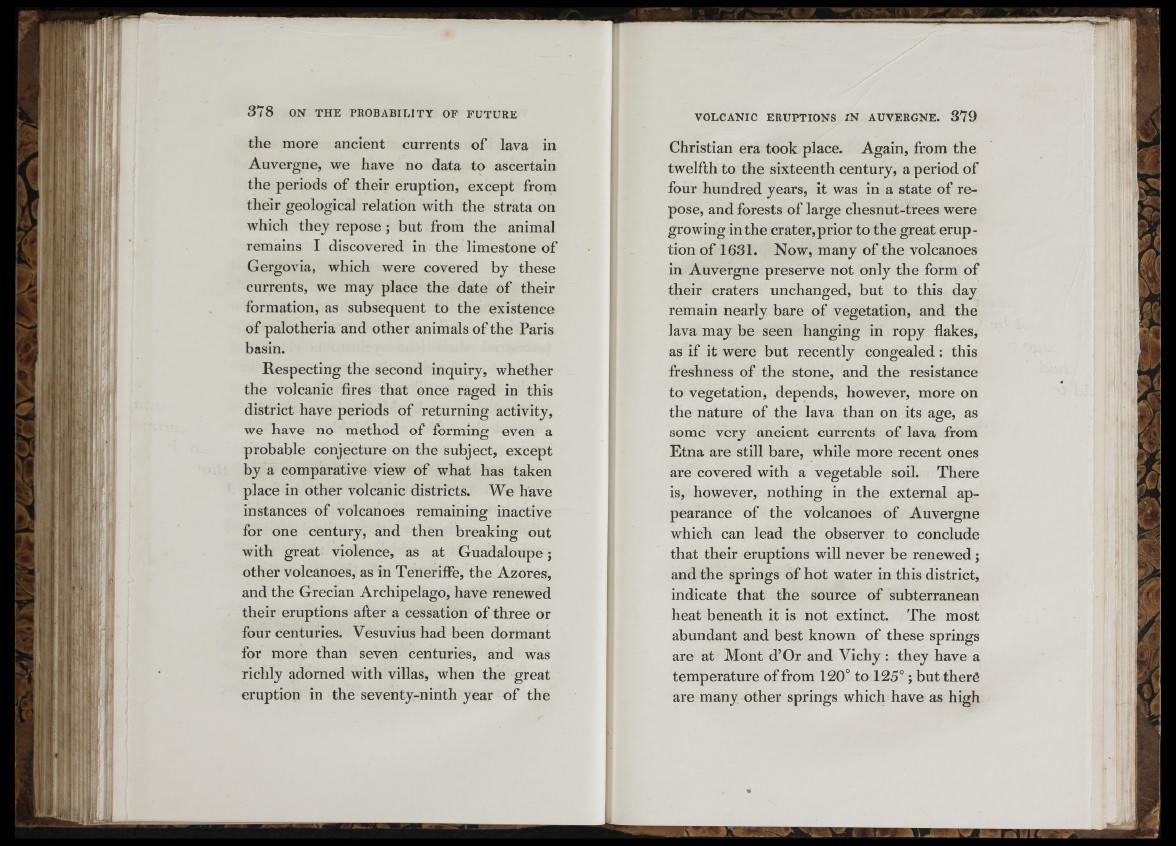
378 ON THE PROBABILITY OP PUTURE
the more ancient currents of lava in
Auvergne, we have no data to ascertain
the periods of their eruption, except from
their geological relation with the strata on
which they repose ; but from the animal
remains I discovered in the limestone of
Gergovia, which were covered by these
currents, we may place the date of their
formation, as subsequent to the existence
of palotheria and other animals o f the Paris
basin.
Respecting the second inquiry, whether
the volcanic fires that once raged in this
district have periods of returning activity,
we have no method of forming even a
probable conjecture on the subject, except
by a comparative view of what has taken
place in other volcanic districts. We have
instances of volcanoes remaining inactive
for one century, and then breaking out
with great violence, as at Guadaloupe;
other volcanoes, as in Teneriffe, the Azores,
and the Grecian Archipelago, have renewed
their eruptions after a cessation of three or
four centuries. Vesuvius had been dormant
for more than seven centuries, and was
richly adorned with villas, when the great
eruption in the seventy-ninth year o f the
VOLCANIC ERUPTIONS IN AUVERGNE. 379
Christian era took place. Again, from the
twelfth to the sixteenth century, a period of
four hundred years, it was in a state of repose,
and forests of large chesnut-trees were
growing in the crater,prior to the great eruption
of 1631. Now, many of the volcanoes
in Auvergne preserve not only the form of
their craters unchanged, but to this day
remain nearly bare of vegetation, and the
lava may be seen hanging in ropy flakes,
as if it were but recently congealed: this
freshness of the stone, and the resistance
to vegetation, depends, however, more on
the nature of the lava than on its age, as
some very ancient currents of lava from
Etna are still bare, while more recent ones
are covered with a vegetable soil. There
is, however, nothing in the external appearance
of the volcanoes of Auvergne
which can lead the observer to conclude
that their eruptions will never be renewed ;
and the springs of hot water in this district,
indicate that the source of subterranean
heat beneath it is not extinct. The most
abundant and best known of these springs
are at Mont d’Or and Vichy : they have a
temperature of from 120° to 125°; but there
are many other springs which have as high
i5l l .1
••
I
r;,